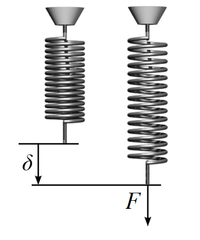
Photo from wikipedia
Collective cell migration on extracellular matrix (ECM) networks is a key biological process involved in development, tissue homeostasis and diseases such as metastatic cancer. During invasion of epithelial cancers, cell… Click to show full abstract
Collective cell migration on extracellular matrix (ECM) networks is a key biological process involved in development, tissue homeostasis and diseases such as metastatic cancer. During invasion of epithelial cancers, cell clusters migrate through the surrounding stroma, which is comprised primarily of networks of collagen-I fibers. There is growing evidence that the rheological and topological properties of collagen networks can impact cell behavior and cell migration dynamics. During migration, cells exert mechanical forces on their substrate, resulting in an active remodeling of ECM networks that depends not only on the forces produced, but also on the molecular mechanisms that dictate network rheology. One aspect of collagen network rheology whose role is emerging as a crucial parameter in dictating cell behavior is network viscoelasticity. Dynamic reorganization of ECM networks can induce local changes in network organization and mechanics, which can further feed back on cell migration dynamics and cell-cell rearrangement. A number of studies, including many recent publications, have investigated the mechanisms underlying structural changes to collagen networks in response to mechanical force as well as the role of collagen rheology and topology in regulating cell behavior. In this mini-review, we explore the cause-consequence relationship between collagen network viscoelasticity and cell rearrangements at various spatiotemporal scales. We focus on structural alterations of collagen-I networks during collective cell migration and discuss the main rheological parameters, and in particular the role of viscoelasticity, which can contribute to local matrix stiffening during cell movement and can elicit changes in cell dynamics.
Journal Title: Frontiers in Cell and Developmental Biology
Year Published: 2022
Link to full text (if available)
Share on Social Media: Sign Up to like & get
recommendations!